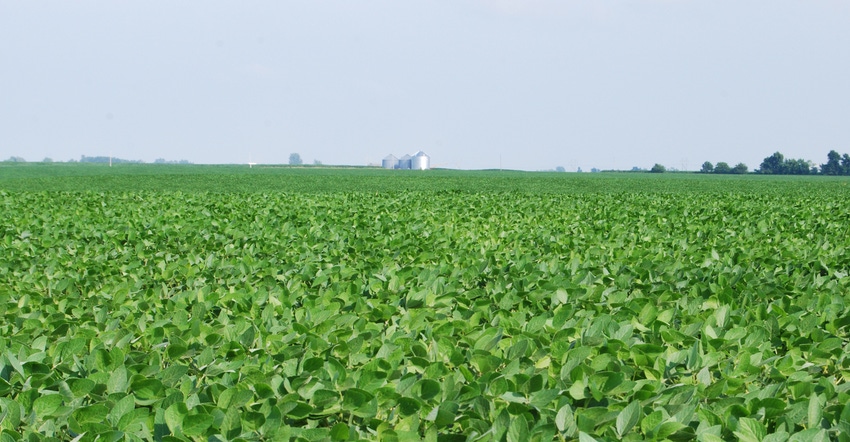July 20, 2018

With revenue protection crop insurance, most Iowa farmers have between $400 and $600 per acre as a guarantee for their planted 2018 corn and soybean crops. Farmers can use that revenue to help withstand crop losses due to yield declines or falling futures prices or both. Those potential crop insurance indemnity payments could prove important this fall when cash flow might be extremely tight.
Flooding, high winds and hail have damaged crops in some areas of Iowa. Export uncertainty due to the U.S.-China tariff tiff and trade uncertainty with other countries has contributed to lower commodity prices.
According to the latest data from USDA’s Risk Management Agency, about 90% of Iowa’s 23 million row crop acres are covered by multiperil crop insurance. Of those insured acres, 96% are protected using Revenue Protection policies. Most farmers will need cash come fall and early winter. They need to understand how crop RP insurance works. However, until the fall harvest is complete, we won’t know overall yields or what indemnity payments, if any, farmers will receive.
Work with agent on possible payments
If crops are affected by natural causes such as flooding, wind or hail, farmers need to:
• notify their crop insurance agent within 72 hours of the loss, so an adjuster can be assigned to work with the insured farmer
• leave the damaged field alone until an adjuster has assessed the damage, and approved or released the field for other cropping or potential tillage practices
• work with their crop insurance agent regarding potential indemnity payments and continue “good farming practices” as required to maintain crop insurance coverage
Most farmers buy enterprise-unit revenue protection policies because insurance premiums are cheaper. However, all the acres of that crop in a farmer’s operation within the county are combined to determine the actual production used in the revenue guarantee. So, the farmer combines their actual production history across multiple farms that reside in a county. If optional units are elected, then the fields in a section of that crop are used to determine the revenue guarantee.
Thus, if a small portion of a corn or soybean field is destroyed by flooding, it may not be enough to bring down overall production. This is especially true if you elected to use enterprise units. Depending on the spring and harvest futures prices, farmers may receive a 2018 revenue loss indemnity payment due more to the drop in futures prices than yield loss.
Crop insurance looms large in 2018
RP insurance guarantees a certain level of revenue rather than just production. It protects farmers from declines in both crop prices and yields. The guarantee is based on futures market prices and APH yields compared to the harvest price and the actual production.
Here’s how RP crop insurance works:
• Revenue Protection uses CME Group futures market prices and APH yields to compute a farmer’s revenue coverage and guarantee. A spring projected price is determined in February by using the monthly average new-crop futures prices for corn (December futures contract) or soybeans (November futures contract).
• A harvest price is determined by averaging the new-crop futures prices during October. The final revenue guarantee is computed by multiplying the higher of either the projected price or the harvest price times the APH yield for the insured farms times the elected coverage level (50% to 85%).
• The insured farmer will receive an indemnity payment if the actual revenue falls below the revenue guarantee. The payment is equal to the difference.
However, “good farming practices” must be maintained during the growing season through harvest on those insured acres. It’s likely farmers won’t know until after harvest when they provide production evidence to their crop insurance agent if they qualify for an indemnity payment and the exact amount to be received.
Farmers need to do a good job at harvest of keeping track of production evidence. They should submit this information by farm to their crop insurance agent immediately following harvest to increase the likelihood of receiving a prompt indemnity payment.
Johnson is an Iowa State University Extension and Outreach farm management specialist. He can be reached at [email protected].
About the Author(s)
You May Also Like






